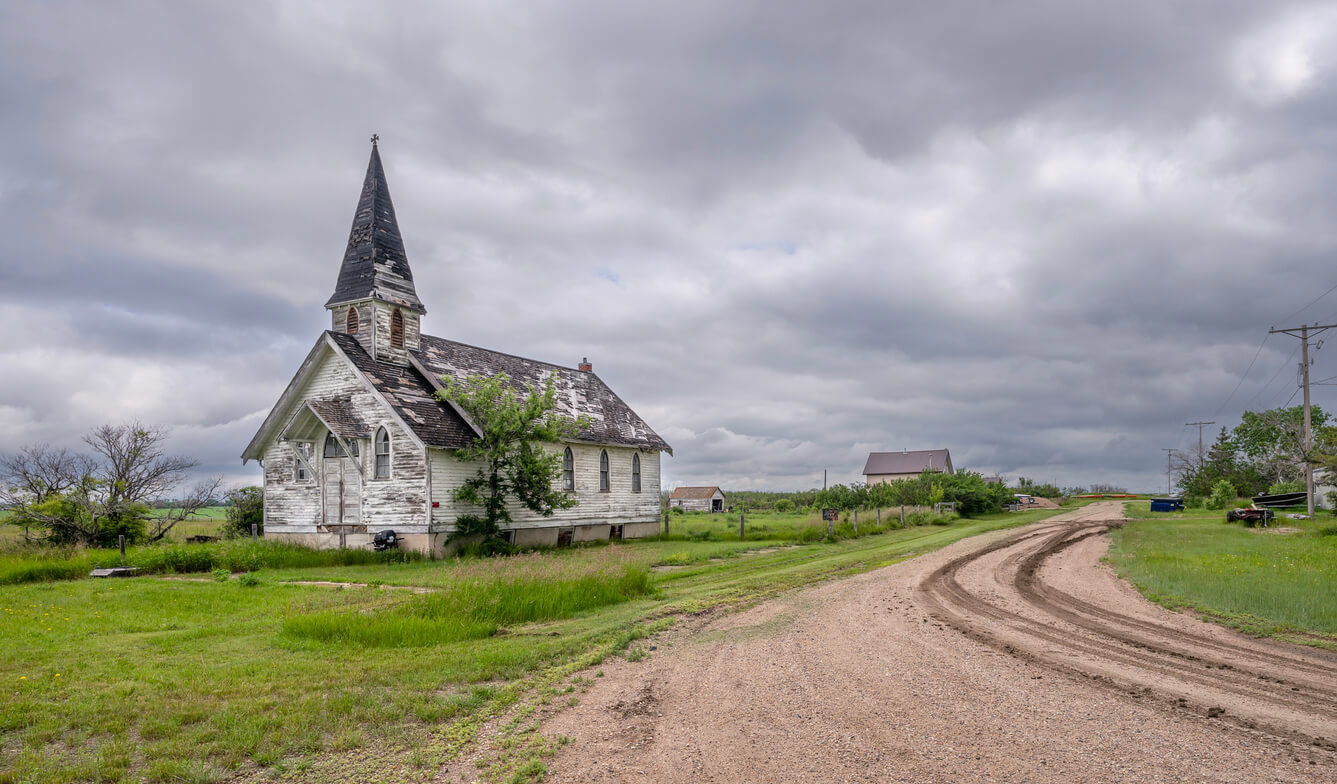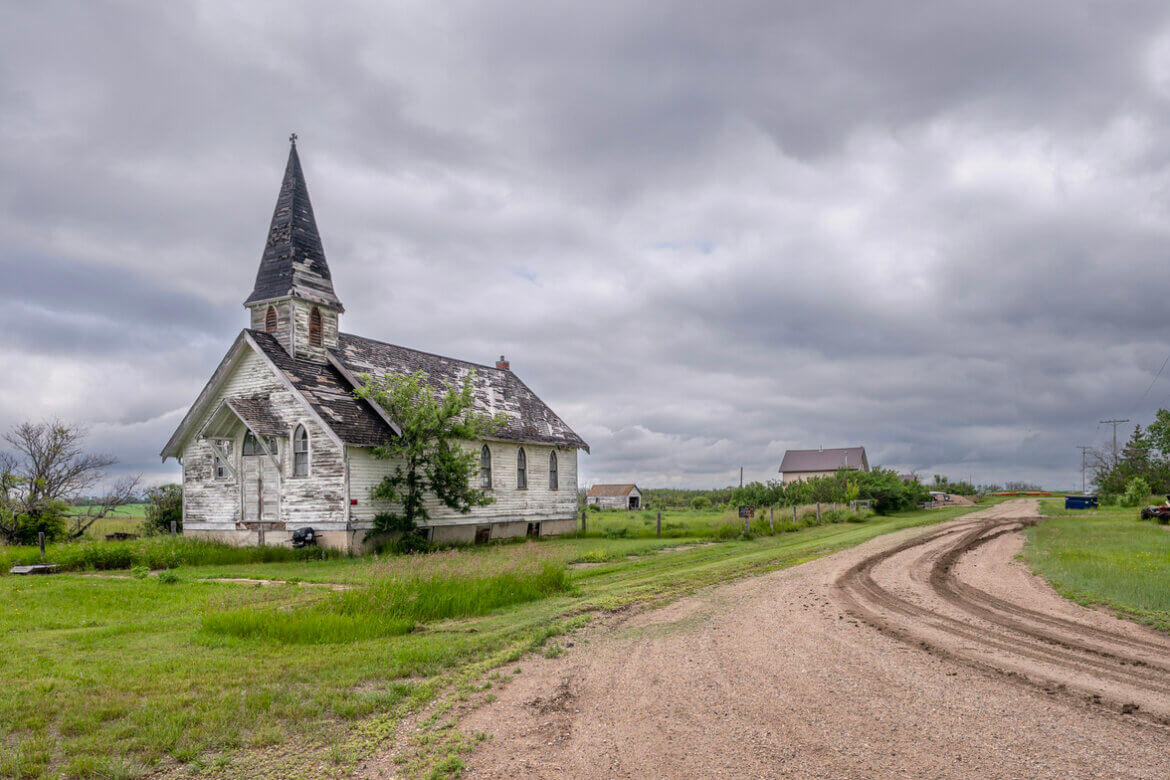A Challenge As We Enter a Period of No Faith?
Dale Perkins, Victoria
Volume 39 Issue 7, 8, & 9 | Posted: October 19, 2024

My final year studying theology at St. Andrew’s College, United Church of Canada, (UCC) Saskatoon (in the spring of 1965) I learned from Stats Canada (or what its title was at the time) that the total UCC population in all of Canada was 1.5 million adherents and members.
Currently I see that the total population for all of Canada for UCC adherents/membership is closer to a 500,000 while the total population of Canada has more than doubled — from approximately 18 million in the mid-60s to the present time of approximately 40 million. Obviously there is a definite “hemorrhaging” in the UCC adherents and membership proportions.
Not having studied the other faith communities, I nevertheless suspect a similar pattern is happening in their demographics. What I’m realizing is that most of the traditional faith communities are experiencing a similar abandonment by membership desiring to re-locate other faith perspectives, beliefs and doctrines.
Does this mean that we’re entering a period in society of no faith religion of any persuasion? The general population is becoming more and more secular and irreligious?
I’m influenced by my culture and beliefs of an earlier period in my life. I had a career in the United Church of Canada for over two decades, and have spent many years studying both old and modern-day theologies and beliefs. I’m well aware of the hopes and aspirations of many of the leaders and spokes-people from several distinct groupings of Christianity. And I have had significant opportunities to learn about and relate to other people of faith from other traditions and religious perspectives.
Numbers don’t lie and it’s becoming increasingly evident that the field of religion is changing. So significant changes are now required from all faith communities to address the current social reality, i.e. if we expect to be significant ‘players’ in the future manifestations of religion and spiritual practices in our country.
What might be some of those changes needed now?
PROPERTY HOLDERS
One is the attitude and practices around the property acquired by a particular denomination over the past century. Many Christian church congregations have become totally fixed on property-management issues. That is, over the years most churches have acquired and built buildings and developed them into sites which house a variety of programs considered vitally important for that congregation.
However it has resulted in forming congregations which become expert property managers, but that has resulted in them almost ignoring their ‘raison d’etre’ as followers of Jesus of Nazareth. Consequently budgets became all important and expertise in property management issues have become the norm for selecting the leadership.
At the same time, a prime reason to be alarmed about reduced numbers of adherents and members was the subsequent shrinking budget and ballooning expenses. A normal outcome was for congregations to amalgamate with other shrinking congregations and selling one of their properties … to turn their acquired property into a money-generating facility or development.
Obviously, there is an end outcome from following this strategy, i.e., fewer church congregations and less church property. Somewhere ‘down the road’ the process comes to an end with amalgamations and sales. The denominational brand will be dramatically reduced, and eventually it might disappear entirely.
SOME VICTORIA EXPERIENCES
Thinking specifically of my experience in Victoria, I can think of eight congregations which have either amalgamated or closed since 1988, and there have been no new congregations launched during that same period … And I know of a similar pattern that happened within the Anglican communion in the region. The Catholic Church has reduced 17 of 42 parishes to missions in recent years.
OPTIONS
What might be some options for shrinking congregations?
A lively one would be for the congregation to think that the property they now manage might become a spiritual incubator, where groups with a spiritual purpose could meet regularly and not require that they own property. A functioning council would be created which has representation from each user-group in the facility.
The ownership issue might continue with the original owners for a set number of years, on the understanding that the property itself would not be sold during that time. This could offer a flexible arrangement that would allow each ‘user group’ to have access and enjoyment of a facility that met their needs and is affordable.
The arrangement would have to be flexible and changes and adaptations could happen. Also the current congregation could be one of the user groups, but without it having to deal with all of the property management issues and concerns, because those concerns and issues were now transferred to the ‘broad-based Council’ itself.
Such an arrangement would be quite exceptional within the current polity of the denomination, and would require a lot of trust, faith, and willingness for the new manifestation of the former independent denominational church to continue, but without the overriding responsibilities of property management.
And the membership of the congregation would need to have faith that what was occurring was far better than the options of sale or amalgamation facing them when they were shrinking and unable to maintain and continue their old patterns. The core challenge would be for the congregation and the overarching denominational structures to accept and welcome this new manifestation of the Spirit.
There is a dominant faith-perspective inside Christianity that is grounded on a belief that the whole purpose of the church is to welcome believers in the Spirit and followers of the Way of Jesus of Nazareth. If that is allowed to be re-introduced as a central purpose and ‘raison d’etre’ of the Christian church community then it can happen.
May it be so
Amen
Dale Perkins, Victoria

